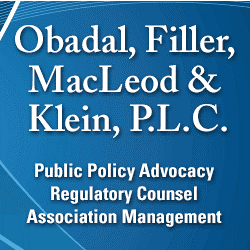Correspondence with EASA on Prototype Parts
On Dec. 11, ARSA received EASA’s response to the association’s letter relating to release to service under European Union (EU) rules of aircraft with “protype” parts installed following issuance of a design approval (e.g., an EASA STC) consistent with the data referenced on the “prototype” EASA Form 1s.
On Nov. 20 ARSA sent a letter to EASA in response to feedback provided by an association member and EU-based Maintenance Organization Approval Holder (MOAH). The member had been informed during an audit that prototype parts installed during an STC project that were subsequently determined to comply with the approved design did not comply with EASA part 145 in that they did not have an appropriate Form 1 or equivalent, such as an 8130-3, certifying they conformed to the approved data.
ARSA demonstrated for EASA how the Agency’s rules and guidance support such approvals without requiring additional documentation (e.g., a “fresh” EASA Form 1) from the Production Organization Approval Holder (POAH). Under EASA guidance, production organizations typically re-certify prototype items as “NEW” on a fresh Form 1 after the applicable design data has been approved.
ARSA’s Nov. 20 letter concluded that the confusion created by the unfortunate audit finding [in the matter raised by ARSA’s EU-based member] could be addressed by allowing the parts to be installed without the need for a fresh Form 1 once the installer determined the parts conformed to the approved data and were in condition for safe operation. (This is similar to what is permitted under FAA rules.) If a new Form 1 was needed the installer was in the best position to provide it.
In its response, EASA reviewed the relationship between its rules and the 2012 “Good Practices” document released to assist in the first installation of a change to a product. This document was favorably cited by ARSA in its Nov. 20 letter. “[While the ‘Good Practices’ document allows] the maintenance organisation to initially install a component in ‘PROTOTYPE’ status, a re-certification of the component by the appropriate organisation [i.e. the POAH] is needed before the final certificate of release to service.” EASA also stated that the Good Practices document did not override existing regulatory requirements.
EASA invited ARSA to continue in the ongoing dialogue between the affected member organization and the agency. The association will report back to ensure clear communication for maintenance organizations performing relevant work on EU-registered aircraft in support of an EASA STC project.
To read ARSA’s Nov. 20 letter, click here.
To read EASA’s Dec. 11 response, click here.








